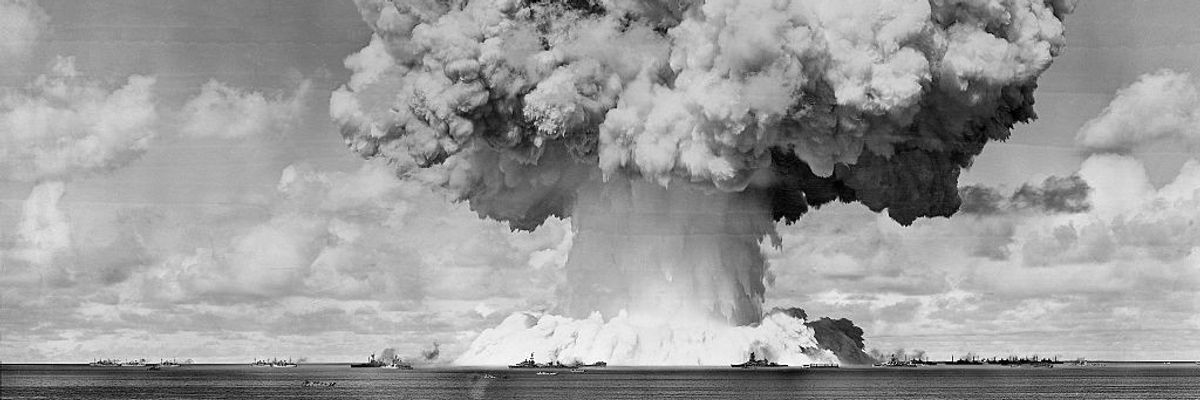Nuclear War. Not an easy topic to think about, one we’d rather ignore, pretend the risk is not real, or that the weapons no longer exist. This altered reality we live in denies the stark reality that the risk of nuclear war is real, with us every moment, and actually higher than at any point since the dawn of the nuclear age and the nuclear bombings of Hiroshima and Nagasaki in 1945. We live in a world with over 12,000 nuclear weapons, many of which are on hair trigger alert, ready to launch at short notice. That notice could be real, misinterpreted, or not even present. There have been many near misses that have brought us to the brink of nuclear war over the years.
In our democracy, we have the ability to speak out and demand that our elected officials act on our behalf and for all of humanity.
On Tuesday, the Bulletin of Atomic Scientists unveiled their metaphorical Doomsday Clock, setting the time at 90 seconds till midnight, the closest it has ever been. This graphic representation of our proximity to doomsday focuses our attention on the risk we face. The Bulletin’s scientific committee arrives at their calculation based on the ongoing interconnected existential threats of nuclear war and climate change, coupled with the man-made disruptive technologies of artificial intelligence and bio-security risks.
This year those risks are heightened with the ongoing wars in Ukraine and Israel, coupled with the continuing political tensions in the Taiwan Strait that continue after last week’s presidential elections. In addition, global hotspots continue between India and Pakistan and North Korea with its ongoing nuclear program development. In the United States during this presidential election year, there’s no word from our elder candidates of the risks of nuclear war and the need to work towards the abolition of these weapons. Seemingly oblivious to the risks of nuclear famine, even from a limited nuclear exchange that puts all of humanity at risk, or more egregiously beholden to the nuclear industrial complex, they ignore the growing will of the people both here at home and around the world calling for nuclear abolition. Rather, they hold on to the myth of deterrence which in actuality is the main driver of the arms race and why we have 12,000 weapons today with every nuclear nation rebuilding their arsenals.
In spite of the risks mentioned, there is hope in this world. The Treaty on the Prohibition of Nuclear Weapons (TPNW), declares nuclear weapons, like all other weapons of mass destruction, illegal to have, use, develop, stockpile, transfer to other countries, or threaten to use and entered into force January 22, 2021. Currently almost half of all countries have joined the Treaty with 93 signatories and 70 states parties. The Treaty held its second meeting of states parties in New York in November. That conference identified nuclear deterrence as the main driver of the arms race. The Treaty supported by Civil Society, and the International Campaign to Abolish Nuclear Weapons (ICAN) with its 650 member organizations from 110 countries provides a legal framework for the abolition of nuclear weapons and a path forward for nuclear nations to sign the Treaty with the commitment for a time bound, verifiable elimination of their arsenals.
In the United States, there is a parallel grassroots movement of civil society called Back from the Brink which supports the TPNW with the precautionary measures that provide safeguards until these weapons are abolished. This movement is supported by 473 organizations, 76 cities and counties, 7 state legislative bodies, 426 municipal and state elected officials, and has been codified in the U.S. House of Representatives H. Res 77 sponsored by Rep. Jim McGovern (D-Mass.) with 42 co-sponsors.
At 90 seconds to midnight, we face an urgent reality. This is a reality that does not have to be but will remain unless we awaken and act now. In our democracy, we have the ability to speak out and demand that our elected officials act on our behalf and for all of humanity. We must resist the status quo and push for a world and future that can be… a world free of nuclear weapons that allows us to direct all of our attention to sustaining our planet for future generations.
